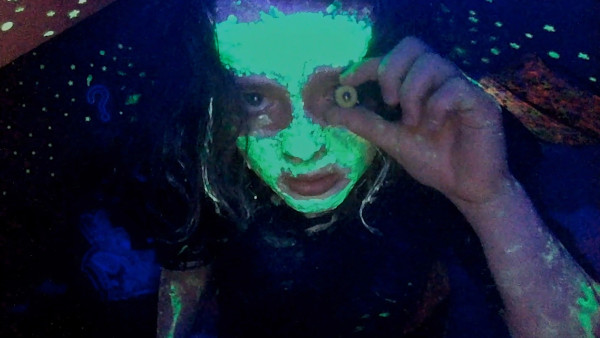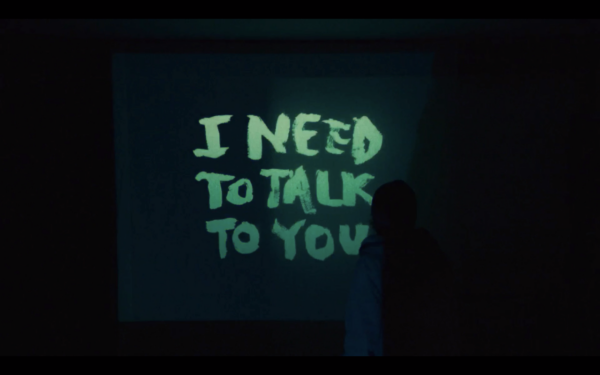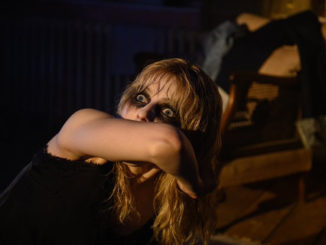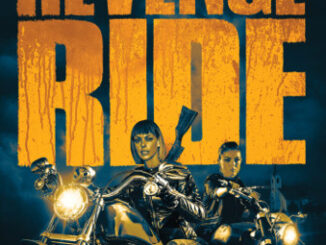We’re All Going to the World’s Fair (2021)
Directed by: Jane Schoenbrun
Written by: Jane Schoenbrun
Starring: Anna Cobb, Michael J Rogers

Say it three times. Draw blood. Watch the video. “I want to go to the world’s fair”. That’s the challenge. If you can do that, then you’ll start to see the changes. Pulling upon internet challenges and online folk lore, this is where we open – with Casey recording herself attempting to complete the world’s fair challenge.
With a disgruntled homelife, she throws herself into an online community centred around this challenge. People are documenting their experiences after taking part, and it’s never fully clear what’s real and what’s not. Varying results are reported, some losing feeling in their bodies, others with strange mould growing on their limbs. We follow her as she gives her updates on what happens to her. She is mostly on her own until things begin to take a sinister turn and she’s contacted by mysterious person telling her she’s in danger, and demanding they talk…
Most people are going to be aware of viral challenges like this. Where the genius of WAGTTWF lies is it creates a panic similar to the general reaction to whenever these challenges make the news. Depending on your perspective, if you’re on the younger side like our protagonist, you can identify with her, and might be taken in by the lore of the challenge– the horror of the unknown potential of the internet. Not knowing what could be possible, innocent and curious enough, you might just believe it’s real. And that’s what scares you. Or you could be in the other group, worried about how these things go wrong, sick to your stomach that someone you know might get pulled into something like this.
Our story is told through a mismatch of styles – mostly through webcam perspective vlogs, but also in videos shown through Casey’s video auto-play queue. The latter gives us a glimpse into the world beyond our characters, and more importantly into the lore of this challenge. Interspersed we also have short traditionally filmed segments giving us an insight into reality of the situation. With the online video portions, even that is shown through a range of contextual filming styles – youtube videos, tiktoks, short clips, as well what seems lengthy video dumps of challenge related video. All of this comes together to feel like a real online experience, pulled from a range of different sources. None of your sleek text messages flying across the screen to show conversation here.

In her first cinematic outing, Anna Cobb is fantastic, she manages to convey a young person’s relationship with the internet, in a way that isn’t condescending but understanding. A lonely girl who takes solace in the online world. Without giving anything away, one moment which exemplifies Cobb’s abilities is a tender moment involving ASMR of all things (you’ll know when it happens). With rolling content defining so much of young people’s understanding of the world, this scene was convincing me that this is pretty damn near close to a horror version of 2018’s Eighth Grade. When the film kicks into gear you really worry about this kid – in her adolescence, she’s still innocent enough to really be taken in by ghost stories, isolated from her parents and with such a presence online she’s ripe to be exploited and all throughout the film you’re given hints and suggestions that this is all about to go very wrong.
While it’s not the first film to attempt to tackle this world of internet horror mythos, I think its easily the best of what I’ve seen. Others have been with varying degrees of success. There was a Slenderman film, as well as anthology series Channel Zero, the latter dealing with direct adaptations of “creepypastas” (online horror stories). WAGTTWF comes to it with a bit of a more unique perspective on it; while the urban legend stuff is there, and it’s what pulls the film along, its very character focused. Truly, a coming-of-age film where you see the World’s Fair challenge mythology build through the characters who are attracted to it.
All of this is wrapped up with a low-fi aesthetic, coming through on the soundtrack with an ambience of harsh buzzing of loose connections, humming, and wind from outside sounding almost blown out, is overwhelming and claustrophobic. Backed up with music by Alex G – distorted indie rock in which you’d be forgiven in some points for thinking this some hipster teen movie. It’s so much more. The roughness in its format makes the whole thing very unsettling. It captures the feeling of watching some low-quality disaster footage online that afterwards you’ll wish you hadn’t seen.
We’re All Going to the World’s Fair is a great piece of work. Drawing inspiration from a new age of ghost stories, it uses this as a jumping off point to tell a human story. With its unique, and accurate delivery to the world is portrays, I can see this seriously resonating with anyone who grew up online, and anyone who worries about others growing up there too. Especially if you’ve had any personal relationship with stories in which it invokes. I can easily see this becoming a future cult classic, and maybe even being THE urban legend film for the age.
We’re All Going to The World’s Fair was shown at this year’s Grimmfest and will be available to watch on the 16th of October from 1:30pm – 11:30pm.





A great review!